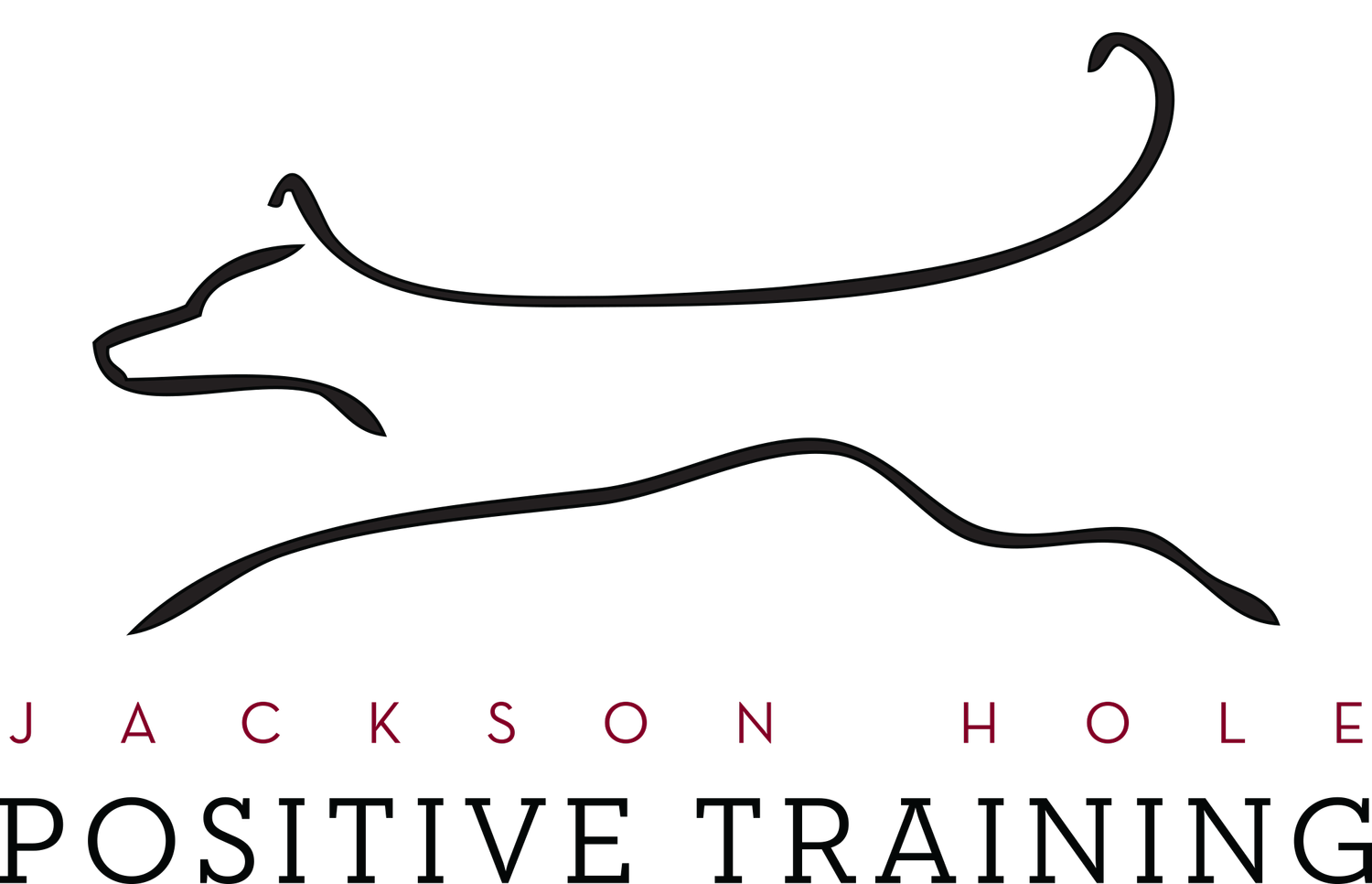So Much to Like About Long Lines
Tools can make life so much easier. When teaching dogs, tools are half of the management piece - the other half being our foresight - to prevent rehearsal of behaviors we don’t want to become habits.
One of the most practical and versatile management tools is a long line, also known as a check cord. Basically, it’s just a really long leash.
Ideally a long line would be about 20-25 feet, although can be shorter or longer. You can buy one or just make one with a piece of climbing rope or equivalent with a clip on the end. Choose round instead of flat, and a bright color so it’s easy to see on the ground. Tie some knots here and there so it doesn’t slip out under your foot when you step on it, especially in the snow. And you are ready to go! (Yes, expect it to get dirty.)
You can use the line as a shorter leash if you loop up the excess, or hold onto the end, or just let your pup drag it - even all those options in the same walk depending on what degree is needed when. Some people fashion a loop as a handle at the tail. Go to chewy.com and search for “check cord” to see what one looks like. For smaller dogs or puppies, something lighter like paracord or twine is suitable.
Don’t ever attach a long line directly to a dog’s collar; if a dragging line gets caught on something, or it’s held and the dog dashes towards something, that’s a lot of force on a dog’s neck. Instead, use long lines in combination with some sort of harness - ideally a front clip harness - which also discourages pulling. Two options are the Freedom for any dog, or the Easy Walk for physically mature dogs. Yes, your dog will initially be a little clumsy about a dragging long line and step on it some. Don’t worry, he’ll learn to navigate it over time. If that really proves a problem you can slip it through the top part of the harness so it’s less likely for your dog to step on it.
What’s a long line for? So many situations!
In general, it’s just the ticket for a pup to wear in places that seem relatively safe to have a little more room to explore, but you still have some control and can set a dog up for success if a tough situation arises. It’s not as restrictive as a leash, but also not quite full off leash privileges either. It’s a perfect in between stage that so many dogs really need, not unlike training wheels on a bike: helping the desired thing to happen, and preventing big wrecks.
We use long lines commonly with puppies to keep them safe, since their brains aren’t ready quite yet to be reliable with something like coming when called.
With adolescent dogs - who often regress a bit with reliability and are easily distracted - a long line can be the perfect backup plan.
With newly adopted dogs we are just getting to know, a long line spells more freedom with significantly less risk.
With senior dogs, especially those who are beginning to lose their hearing, a long line can really keep them safe.
Long lines mean more freedom. They are the perfect tool to give a dog that can’t be fully off leash more room to explore and ability to choose on stress-reducing sniffaris - basically, walks where the dog gets to decide where to go and what to explore with their nose - which we know are really beneficial for dogs. On a shorter leash, that’s harder to do.
Long lines are also the key for teaching our dogs a reliable recall, because they enable us to adjust our position in relation to the dog and the distraction and set our dog up for success. This usually means stepping on the line and getting closer to the dog so he can succeed. We DO NOT use the long line as a tow rope to pull the dog in, or to jerk on the dog in any way. If the scenario is just too difficult for the dog to respond and we need to collect him, it’s much easier to do this (and far less frustrating for the human) if a dog is on a long line. All we have to do it step on the line! This also puts an end to “catch me if you can”.
Dragging a long line is not ideal for situations where there’s not enough room (like on a busy sidewalk in town) or circumstances where a dog is likely to play with other canines, because the line can really tangle people and dogs up. But there’s a solution! For someplace like the dike, use a long line when the coast is clear, and then simply swap it out for dragging a leash when you encounter a playful dog or group of people. (Or perhaps, collect your pup, skedaddle over to the side of the path, and teach your dog the skill of quietly letting people and dogs just walk by.)
We also need to be aware that when holding the end of a long line, if a dog goes dashing towards something, the resulting force could possibly cause rope burn and/or being pulled down. So being aware of your surroundings and what your dog is doing is key - but of course, that’s a critical ingredient for being out with our dogs, anyway, right?
Last but not least, they are also one of the least expensive tools around. Yet another reason to like the versatile, practical long line!

